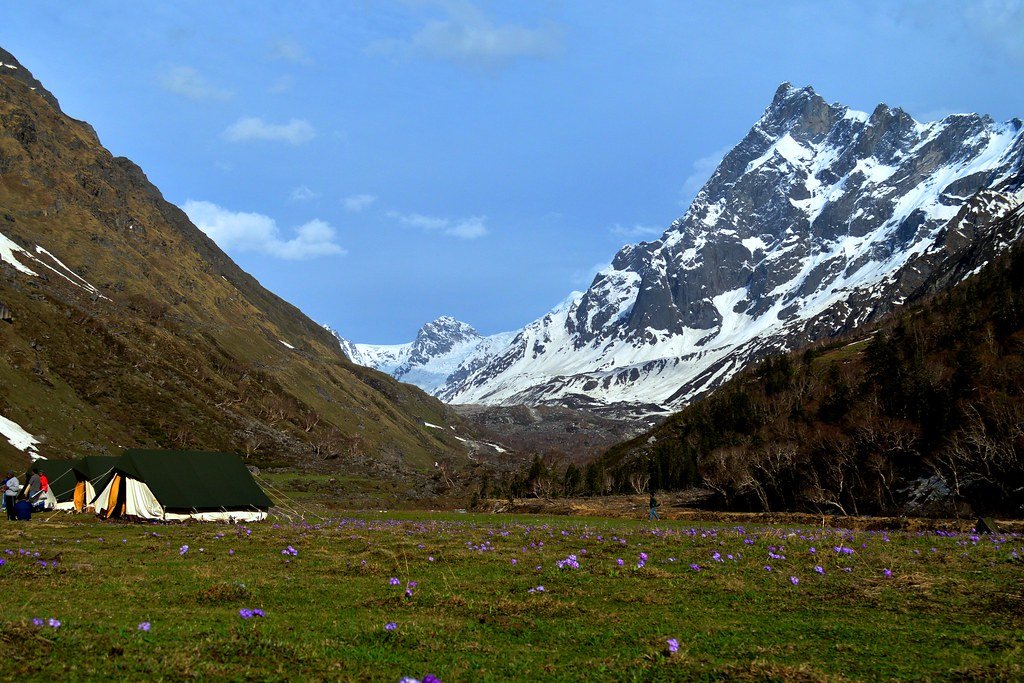Chittorgarh: Rajasthan’s Crown Jewel | 16 Best Places To Visit In Chittorgarh | How To Reach
Chittorgarh, situated in the state of Rajasthan, India, is a historic city recognized as a UNESCO World Heritage Site. Chittorgarh is a bustling metropolis teeming with life, where modern skyscrapers stand in stark contrast to the cobblestone streets of its ancient quarters. The city pulses with energy, its streets alive with the constant movement of people from all walks of life. The heart of Chittorgarh is its vibrant marketplace, a kaleidoscope of colors and aromas where traders hawk their wares amidst the clamor of bargaining voices. Here, one can find anything from exotic spices and textiles to intricate crafts and cutting-edge technology, a testament to the city’s status as a melting pot of cultures and commerce.
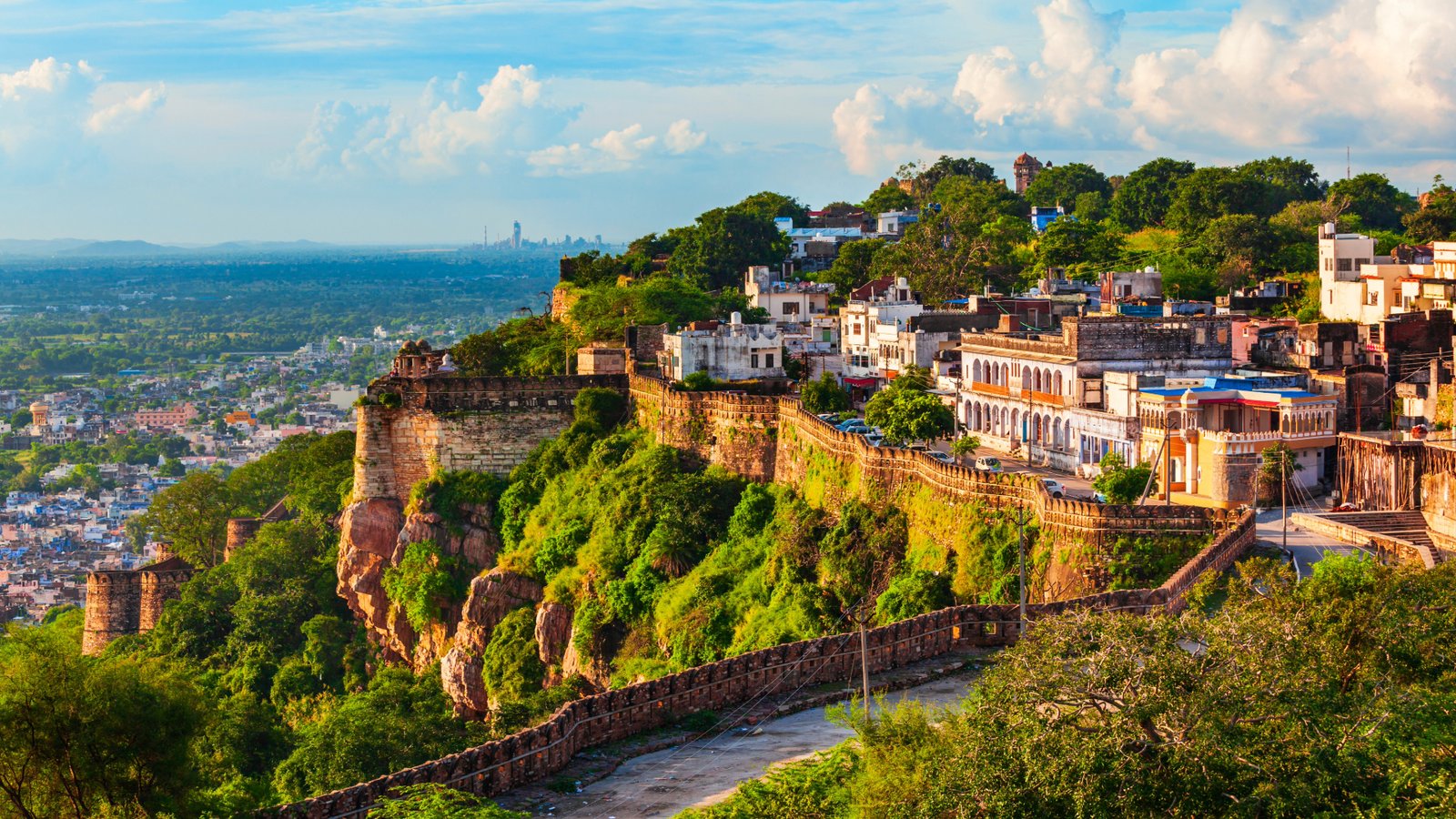
Best Places To Visit In Chittorgarh:
Chittorgarh Renowned for its expansive fort, the largest in India, it stands as a symbol of the valor and courage displayed by Rajput warriors throughout history. The fort, witness to numerous battles and sacrifices, is adorned with monuments, temples, and palaces, including notable attractions such as the Vijay Stambh (Victory Tower), the Kirti Stambh (Tower of Fame), the Rana Kumbha Palace, the Padmini Palace, and the Meera Temple. Chittorgarh is celebrated for its rich culture and heritage, marked by various festivals and events held throughout the year. The Jauhar Mela, a prominent event, pays homage to the bravery of women who performed jauhar (self-immolation) to protect their honor during invasions. This annual mela, held in March, draws thousands of tourists and pilgrims.
Here are some places to visit in Chittorgarh:
1. Chittorgarh Fort
Chittorgarh Fort, among the grandest and historically significant forts in India, holds UNESCO World Heritage status. Serving as the capital of the Mewar kingdom for eight centuries, the fort bears witness to numerous battles, sieges, and displays of valor by the Rajput rulers and their courageous women. Notable attractions within the fort include the Vijay Stambha (Tower of Victory), Kirti Stambha (Tower of Fame), Rana Kumbha Palace, and Padmini Palace.

2. Vijay Stambha (Victory Tower)
Vijay Stambh, also recognized as the Victory Tower, stands as a splendid monument within Chittorgarh Fort. Constructed by Rana Kumbha, the ruler of Mewar, in 1448 CE, the tower commemorates his triumph over Sultan Mahmud Khilji of Malwa. Soaring to a height of 37.19 meters with nine intricately adorned stories, each featuring sculptures depicting Hindu deities, the tower pays homage to Lord Vishnu. At its base lies a temple, further enhancing its sacred significance. This towering structure serves as a profound symbol of the unwavering courage and pride of the Rajputs, who valiantly defended their land and honor against numerous invaders.
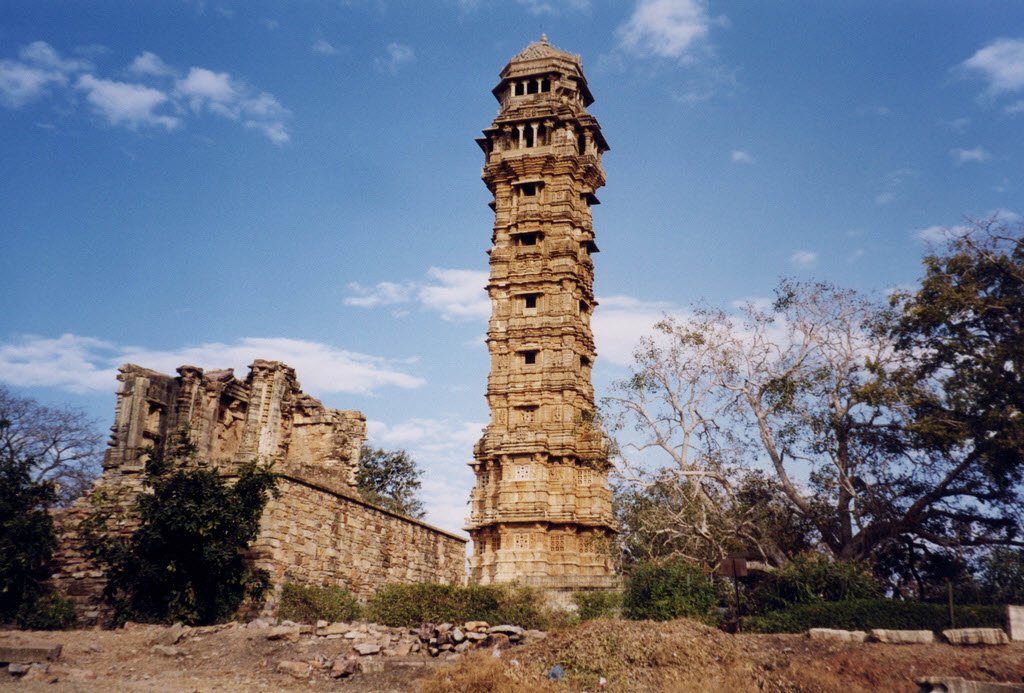
3. Kirti Stambha (Tower of Fame)
The Tower of Fame, or Kirti Stambha, stands as a 12th-century architectural marvel within Chittor Fort in the town of Chittorgarh, Rajasthan, India. Devoted to the first Jain Tirthankara, Adinatha (Rishabhanatha), this tower showcases the distinctive Solanki style of architecture. With its seven stories adorned with sculptures depicting Jain Tirthankara’s and other revered religious figures, the tower serves as a profound symbol of the region’s ancient and opulent Jain heritage.
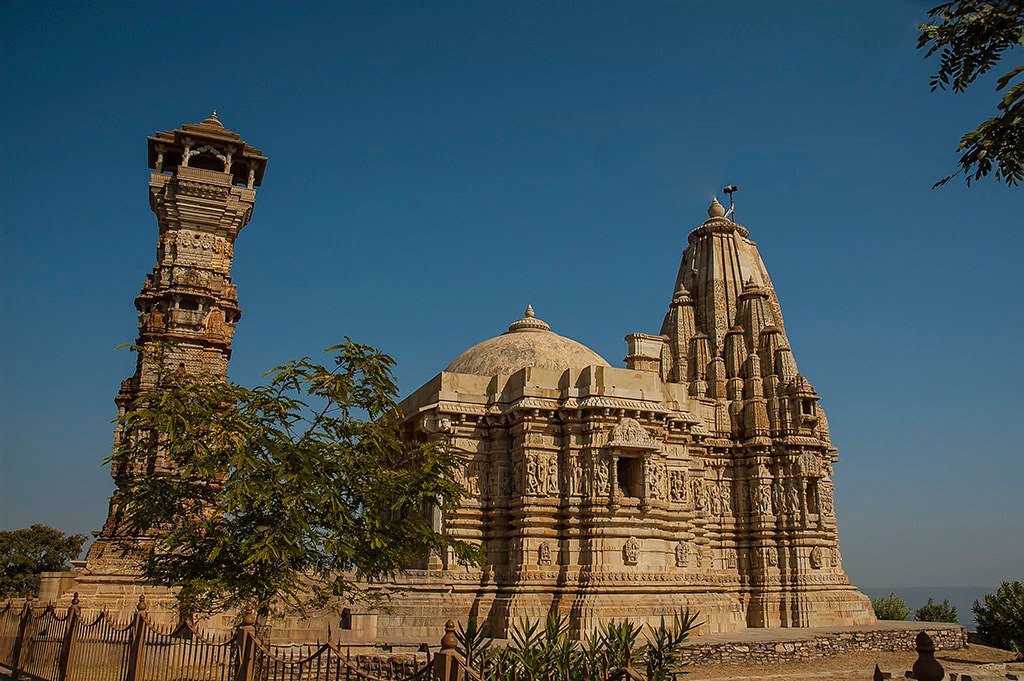
4. Rana Kumbha Palace
The Rana Kumbha Palace stands as a historic testament to the valor of Rana Kumbha, the ruler of Mewar, who commissioned its construction in the 15th century. This palace witnessed a myriad of significant events, including the birth of Maharana Udai Singh, the esteemed founder of Udaipur, the devotional pursuits of Meera Bai, a revered poetess and saint, and the poignant self-immolation of Rani Padmini and her companions. Embodying the Rajput style of architecture, the palace encompasses notable features such as a temple dedicated to Lord Shiva, a zenana mahal (women’s quarters), a diwan-e-aam (public audience hall), and a stable for horses. Serving as a testament to the courage and cultural richness of the Rajput, the Rana Kumbha Palace is a poignant chapter in history.
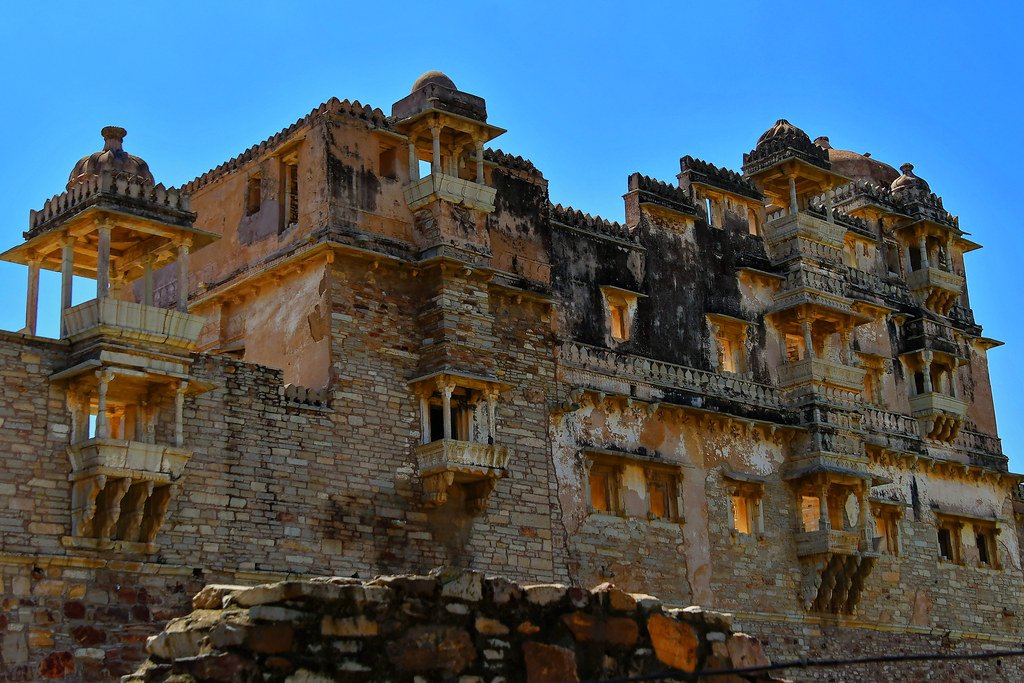
5. Padmini Palace
Padmini Palace stands as a poignant historical monument. Nestled within the Chittorgarh Fort, a designated UNESCO World Heritage Site This palace served as the residence of Rani Padmini, the legendary queen of Mewar celebrated for her beauty and courage. Poised in the midst of a lotus pool, the palace was a haven utilized by the queen and her companions. Notably associated with the tragic tale of Rani Padmini’s self-immolation (jauhar) alongside thousands of other women during the siege by Alauddin Khilji in 1303 CE, the palace is a two-storeyed structure adorned with intricate carvings and arches. Its elevated position offers a splendid panoramic view of the fort and the surrounding landscape.
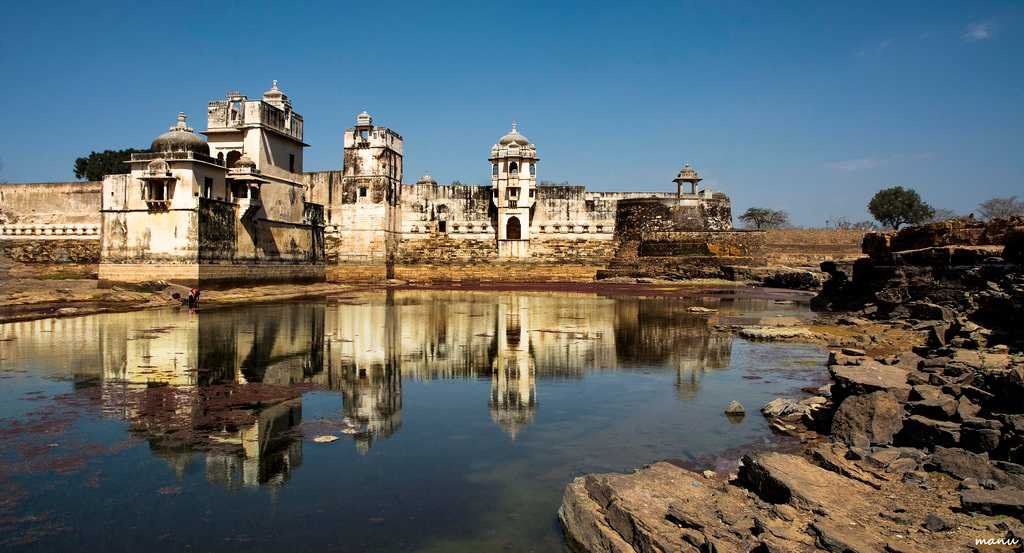
6. Meera Temple
the Meera Temple stands as a captivating tribute to Meera Bai, a Rajput princess devoted to Lord Krishna. Constructed by Maharana Kumbha, her grandfather and the ruler of Mewar, the temple boasts stunning architecture adorned with carvings and sculptures illustrating the life of Meera Bai and the divine tales of Lord Krishna. Notably, the temple features a statue with five bodies and one head, symbolizing the unity across castes and religions. Meera Bai, a poet and saint, composed numerous hymns and songs extolling Lord Krishna. Despite facing familial and societal opposition, she renounced her royal life, embracing a path of devotion. Revered as one of India’s most influential women saints, her legacy is embodied in the Meera Temple.
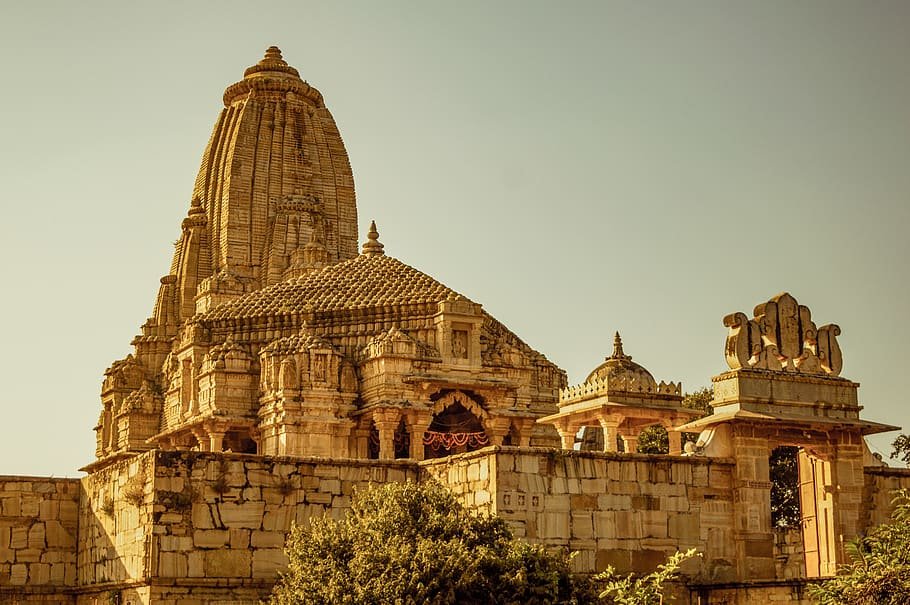
Timings: Open daily from 9:30 am to 6:30 pm.
Entry fees: Free.
7. Bassi Wildlife Sanctuary
Bassi in the Chittorgarh district of Rajasthan, India, the Bassi Wildlife Sanctuary sprawls across 150 square kilometers, having been established in 1988. Within its bounds, a diverse array of wildlife thrives, including jackals, panthers, peacocks, cranes, and wild boars. The sanctuary has become a favored destination for wildlife enthusiasts and photographers, offering a scenic haven for nature lovers. Situated on the western periphery of the Vindhyachal Ranges, the sanctuary encompasses the Bassi and Orai dams as integral components. Just 5 kilometers away lies the historical attraction of Bassi Fort Palace, adding an extra layer of cultural significance to the region.
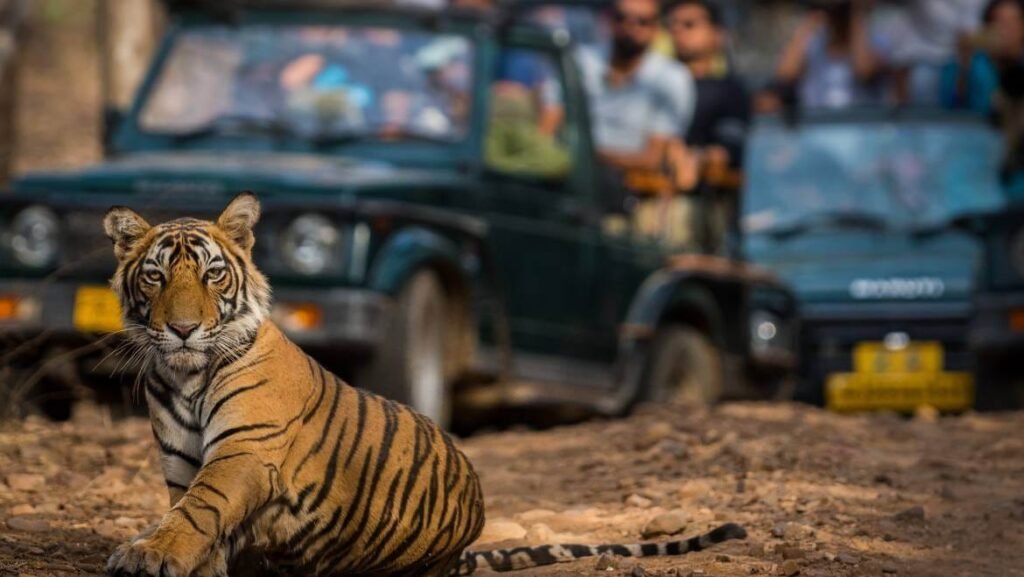
Timings: Open from 6:30 AM to 5:00 PM.
Entry fees: INR 10 for Indian nationals, INR 80 for foreign nationals, and INR 2 for students.
8. Sathis Deori Temple
Sathis Deori Temple, a collection of 27 Jain temples situated within the Chittorgarh Fort near Fateh Prakash Palace, dates back to the 11th century. Devoted to the Jain Tirthankaras, these temples boast exquisite carvings and sculptures, serving as splendid showcases of Jain culture and art. Acknowledged for their cultural significance, the site has earned the prestigious designation of a UNESCO World Heritage Site. At the heart of the temple complex stands the sanctuary dedicated to Lord Adinath, the first Tirthankara. Adorned with intricate designs on walls and pillars, the temple provides a sacred haven for worship and tranquility for the Jain community. Drawing pilgrims and tourists alike, it is a revered destination.
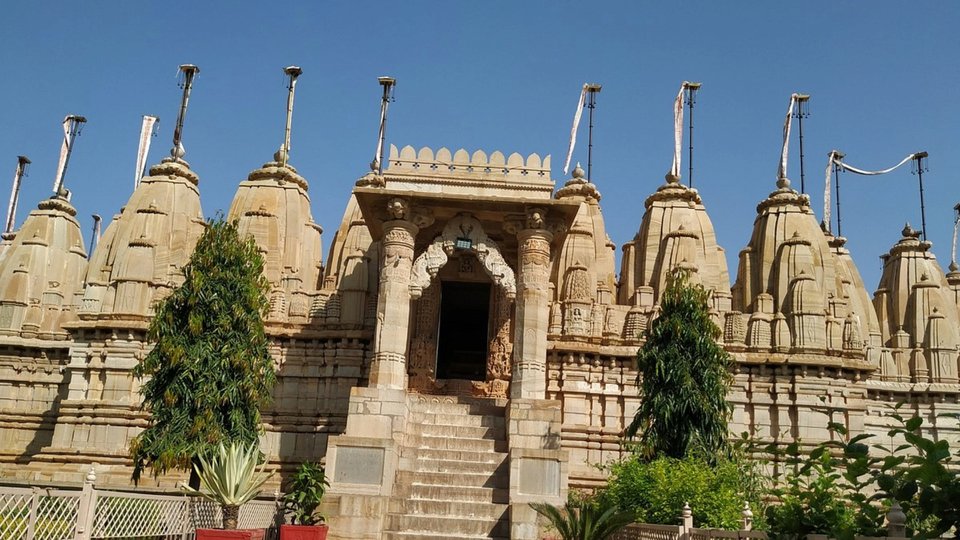
Timings: Open its doors from 9:30 AM to 6:30 PM.
Entry fees: INR 15 for Indian citizens and INR 200 for foreign nationals,
9. Shyama Temple
The Shyama Temple, a Hindu shrine dedicated to Lord Varaha, the boar incarnation of Lord Vishnu, is situated within the Chittorgarh Fort near the Fateh Prakash Palace. Originating in the 11th century, the temple underwent renovations by Maharana Kumbha in the 15th century. Noteworthy features include its lofty roof, pyramidal tower, and intricately adorned walls showcasing sculptures depicting various Hindu deities. Also referred to as the Kumbha Shyam Temple, it shares its compound with the Meera Temple, the private place of worship for the mystic poetess Meera Bai.

Timings: Open from 9:30 AM to 6:30 PM.
Entry fees: free
10. Sanwariaji Temple
Sanwariaji Temple, dedicated to Lord Krishna, graces the Chittorgarh-Udaipur Highway, approximately 40 kilometers from Chittorgarh. Also known as Shri Sanwaria Seth, it holds significance as the second most revered temple in the Vaishnav sect, following only the Shrinath Ji Temple in Nathdwara. Particularly esteemed among opium farmers, who seek blessings for prosperity, the temple serves as a sacred haven for devotees. Constructed in 1840, the temple’s origin traces back to a visionary dream of Bholaram Gurjar, a cowherd, who envisioned three idols of Lord Krishna buried underground in a nearby village. Unearthed and installed at three different locations, including Mandaphiya where the Sanwariaji Temple stands today, the other two temples reside in Bhadsoda and Chapar. Fashioned from pink sandstone with a pyramidal tower, the temple houses a black stone statue depicting Lord Krishna’s dark complexion. Attracting a multitude of devotees and tourists annually, the temple hosts vibrant festivals and fairs, providing a captivating spiritual experience.
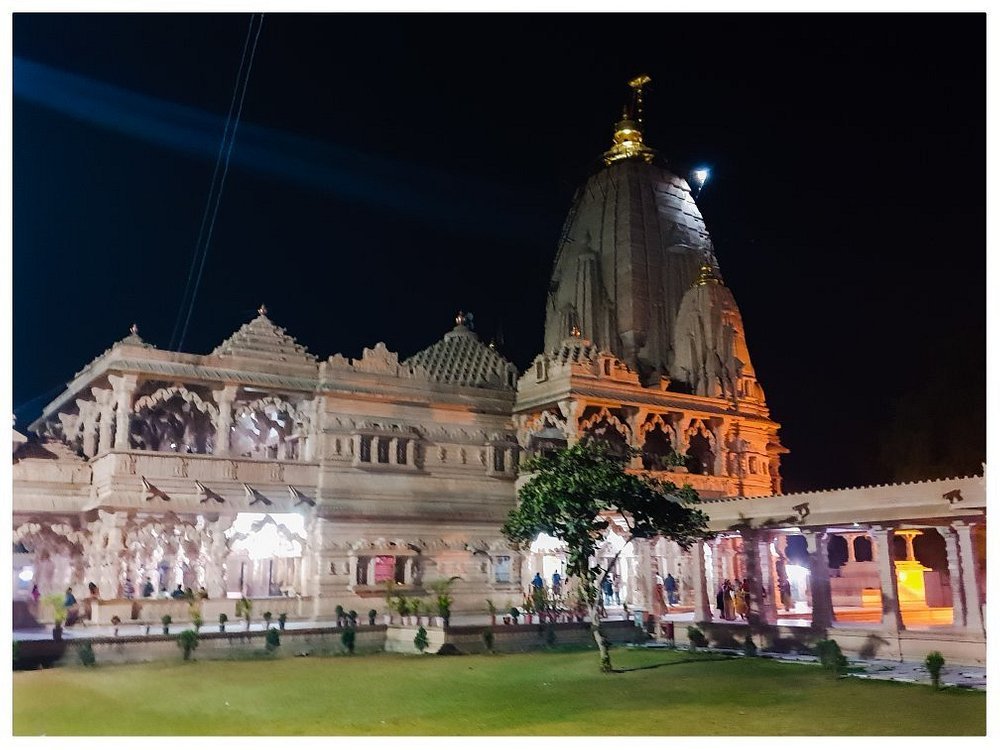
Timings: Open from 5:00 AM to 12:00 PM and 2:30 PM to 11:00 PM.
Entry fees: free.
11. Kalika Mata Temple
the Kalika Mata Temple, dating back to the 8th century, stands as a revered Hindu sanctuary. Dedicated to Goddess Kalika, an incarnation of Goddess Durga symbolizing power and protection, the temple’s origins trace back to its initial construction as a Sun temple. However, during the sack of Chittor, it suffered partial destruction, prompting its reconstruction by Rana Kumbha. The temple is a harmonious blend of Rajput and Mughal architectural styles, featuring intricate carvings, ornate pillars, and a pyramidal tower. Recognized as a UNESCO World Heritage Site.
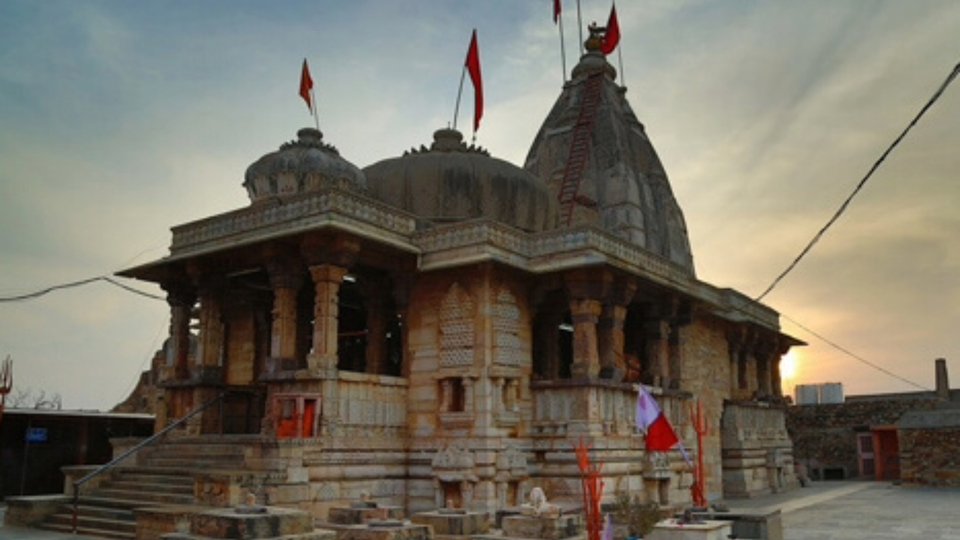
Timings: Open from 9:45 AM to 5:15 PM
Entry fees: free
12. Ratan Singh Palace
The Ratan Singh Palace stands as a testament to history. Nestled within the Chittorgarh Fort in Rajasthan, India, Constructed by Maharana Ratan Singh II, the son of Rana Sanga, between 1528 and 1531 AD, this palace showcases beautiful Rajput architecture. Boasting a grand entrance, a spacious courtyard, a temple, and balconies offering panoramic views of the Ratneshwar Lake, the palace served as a winter residence and hosted various royal events and ceremonies. Today, the Ratan Singh Palace is a cherished tourist attraction, providing a captivating glimpse into the rich cultural heritage of Mewar.
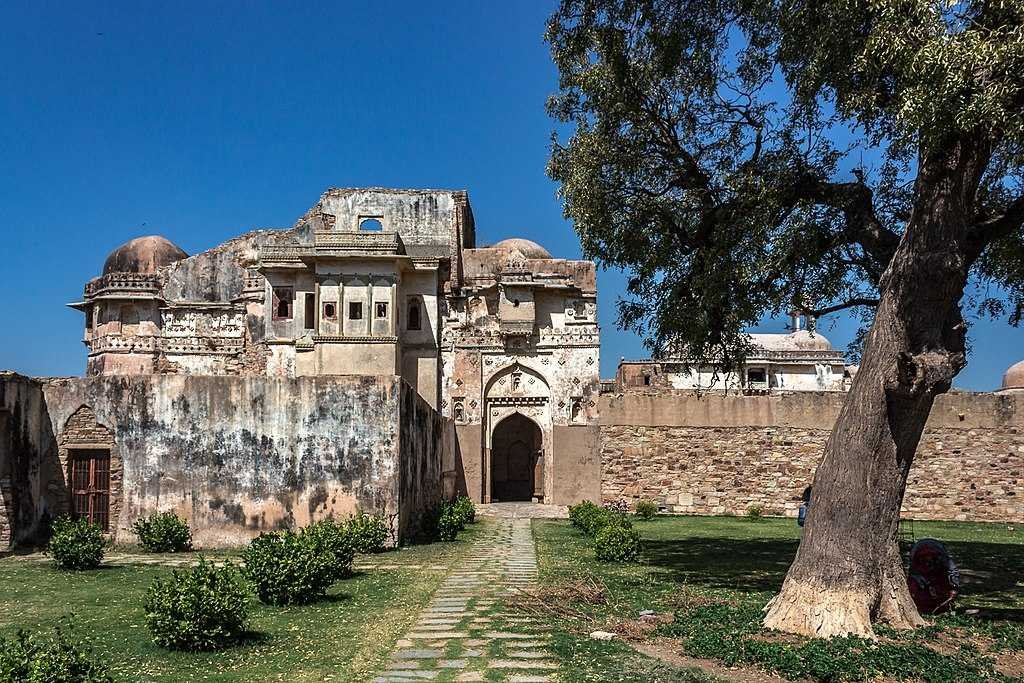
Timings: Open from 9:45 AM to 6:00 PM every day except Friday.
Entry fees: INR 15 for Indian citizens and INR 200 for foreign nationals.
13. Menal
Menal, a small village in the Chittorgarh district of Rajasthan, India, is celebrated for its ancient temples, waterfalls, and dense forests. Known as the “mini Khajuraho” due to erotic carvings on some temples, Menal is about 90 km from Chittorgarh and accessible by road. Key attractions include the Menal Waterfall, a spectacular cascade surrounded by lush greenery, Menal Temples dating back to the 11th and 12th centuries, and the Mahabaleshwara Temple with intricate sculptures reminiscent of Khajuraho. Menal also offers birdwatching opportunities, with a variety of avian species to spot, including peacocks, parrots, kingfishers, eagles, owls, and vultures, especially active during early mornings or evenings.
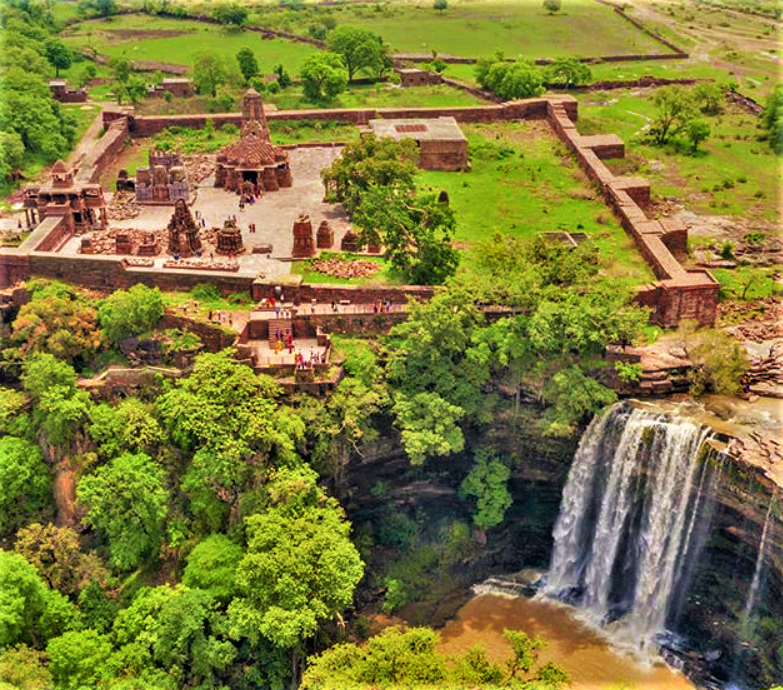
14. Bhainsrorgarh Wildlife Sanctuary
The Bhainsrorgarh Wildlife Sanctuary, located near Chittorgarh, is a picturesque destination situated in the Aravalli Hills, where the Bemany and Chambal rivers converge. Abounding in diverse wildlife, the sanctuary is home to chinkaras, foxes, hyenas, deer, jackals, antelopes, wild boars, crocodiles, turtles, lizards, flamingos, sarus cranes, geese, black-bellied terns, red-crested pochards, hawks, storks, darters, owls, and occasionally, dolphins. While exploring the sanctuary, one can also catch a glimpse of the historic Bhainsrorgarh Fort, constructed by Rawat Lala Singh in the 16th century, now repurposed as a heritage hotel. The optimal time to visit is during the monsoon season when the waterfall and lush greenery are at their peak. offering a delightful experience for nature enthusiasts and history lovers alike.
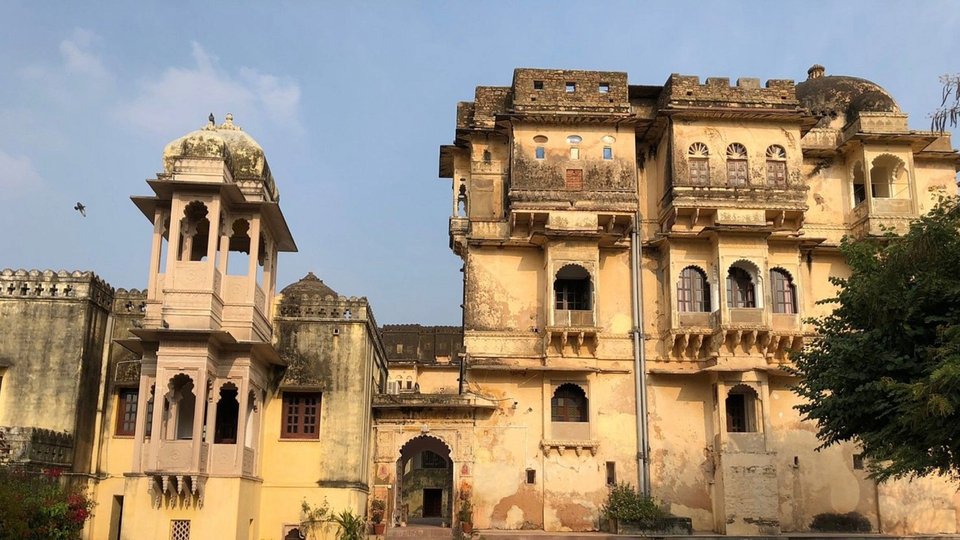
Timings: from 9:00 AM to 6:00 PM.
Entry fees: free
15. Gaumukh Kund
Gaumukh Kund, situated in the western part of Chittorgarh Fort, is a sacred water reservoir with a unique origin. Its name, translating to “the mouth of a cow,” stems from the water flowing through a rock shaped like a cow. This reservoir served as the primary water source for the fort and its palaces. Additionally, it holds religious significance for Hindus, who believe that bathing in its waters purifies them from sins. Visitors can also engage in feeding the fishes in the reservoir while enjoying the tranquil surroundings. Nearby, the Rani Bindar Tunnel, where Rani Padmini performed Jauhar, adds historical depth to the site.
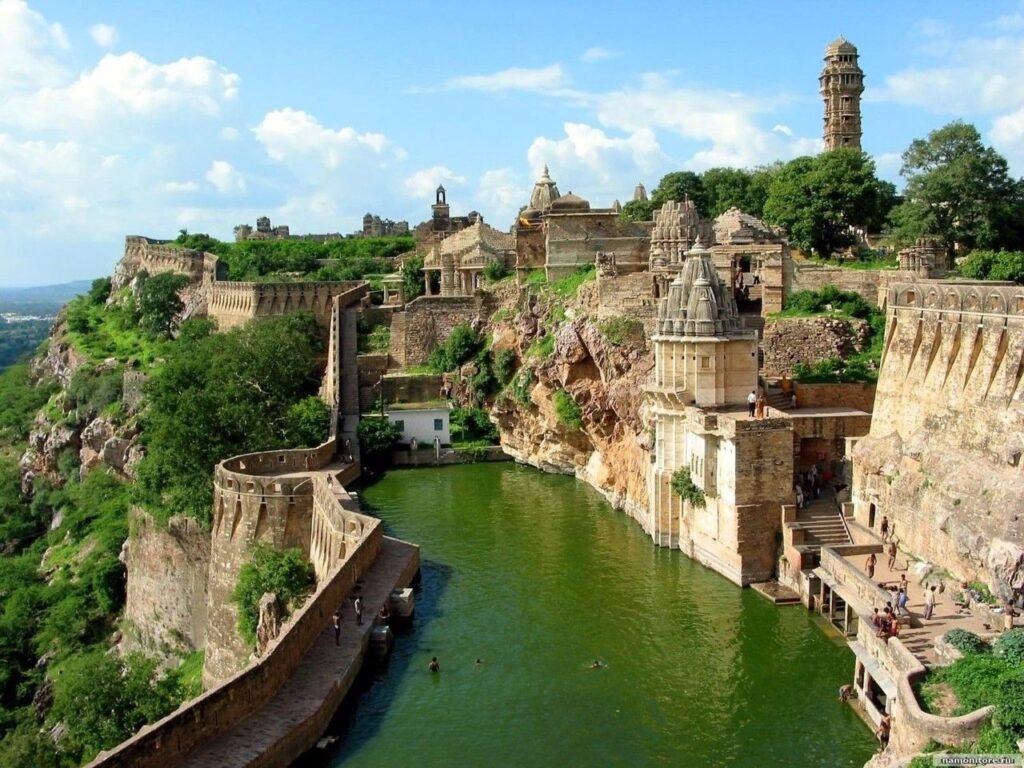
Timings: from 9:45 AM to 6:00 PM every day except Friday.
Entry fees: INR 15 for Indian citizens and INR 200 for foreign nationals.
16. Archaeological Museum
The Archaeological Museum of Chittorgarh serves as a repository of the city’s historical and cultural legacy in Rajasthan, India. Housed within the expansive Chittorgarh Fort, renowned as one of India’s largest and most significant forts, the museum features a diverse collection of artifacts spanning various periods and dynasties of Indian history. On display are sculptures, paintings, weapons, coins, inscriptions, as well as metal and terracotta figures. Notable highlights within the museum include a sizable model of the Chittorgarh Fort, a recreated royal durbar of the Rajput kings, and relics associated with Jain and Buddhist religions. Established in 1968 by the Government of India, the museum initially formed part of the 19th-century Fateh Prakash Palace, commissioned by Maharaja Fateh Singh A visit to this museum is a must for those intrigued by the rich and illustrious history of Chittorgarh and Rajasthan.
Timings: Open from 9:30 AM to 5:30 PM.
Entry fees: INR 25 for Indian nationals and INR 50 for foreign nationals.
How To Reach Chittorgarh
By Air:
The nearest airport to Chittorgarh is Maharana Pratap Airport (UDR) in Udaipur, which is approximately 90 kilometers away. The airport has regular domestic flights connecting to major cities in India. After reaching the airport, you can hire a taxi or take a bus to reach Chittorgarh.
By Road:
Chittorgarh is well-connected by road, and you can reach the city by bus or private vehicle. The city has a good network of national highways. There are regular bus services from nearby cities like Udaipur, Jaipur, and Ajmer. You can also hire a taxi or drive your own vehicle to reach Chittorgarh.
By Train:
Chittorgarh has a major railway station, Chittorgarh Junction (CNB), which is well-connected to various cities in India. The station is a significant junction, and several trains pass through or terminate here. You can easily find trains from major cities like Delhi, Mumbai, Jaipur, and Ahmedabad to Chittorgarh.
Here is a table of trains from Delhi to Chittorgarh Junction (CNB) along with their name, number, timing, and charges.
| Train Name | Train Number | Departure Time | Arrival Time | Duration | Fare |
|---|---|---|---|---|---|
| NJP UDZ SPECIAL | 09602 | 12:20 PM | 12:55 AM | 12h 35m | INR 1355 |
| YNRK UDZ SPL | 09610 | 12:30 AM | 12:50 PM | 12h 20m | INR 355 |
| MEWAR EXP SPL | 02963 | 4:40 PM | 2:45 AM | 10h 5m | INR 385 |
Fares are for the sleeper class and may vary. Check the exact fare and availability on the IRCTC website or app.
Chittorgarh Weather & Temperature
Chittorgarh experiences a hot and dry summer with temperatures ranging from 35 to 45 degrees Celsius. The monsoon season, from July to September, brings moderate rainfall and humidity. Winter, from October to February, is the most pleasant time to visit, with daytime temperatures ranging from 10 to 25 degrees Celsius. It is advisable to check the weather forecast before planning a trip and pack accordingly.
Nearby Places To Visit In Chittorgarh
| City | Distance from Chittorgarh | Attractions |
|---|---|---|
| Udaipur | 121 km | City Palace, Lake Pichola, Sajjangarh Palace, Fateh Sagar Lake, Jagdish Temple |
| Bundi | 153 km | Taragarh Fort, Raniji ki Baori, Sukh Mahal, Garh Palace, Nawal Sagar Lake |
| Kota | 177 km | Kota Barrage, Seven Wonders Park, Garadia Mahadev Temple, Jagmandir Palace, Kishore Sagar Lake |
| Ajmer | 197 km | Ajmer Sharif Dargah, Ana Sagar Lake, Adhai Din Ka Jhonpra, Akbar’s Palace and Museum, Nareli Jain Temple |
| Pushkar | 212 km | Brahma Temple, Pushkar Lake, Savitri Temple, Varaha Temple, Pushkar Camel Fair |
Frequently Asked Questions:
What is the famous thing in Chittorgarh?
Chittorgarh is home to the Chittorgarh Fort, the largest and among the most historic forts in India. Recognized as a UNESCO World Heritage Site , temples, and palaces, including the Padmini Palace, Kirti Stambh, Vijay Stambh, and Kalika Mata Temple,
When to visit Chittorgarh?
is famous for its majestic fort and monuments. The best time to visit is from September to March, characterized by pleasant weather, ideal for exploration and cultural events. Summers (April to June) are hot and dry, unsuitable for sightseeing, while the monsoon season (July to August) brings rainfall,
Udaipur To Chittorgarh Distance?
The distance from Udaipur to Chittorgarh is approximately 117 kilometers.
Is it worth going to Chittorgarh?
hittorgarh Fort is one of the largest and oldest forts in India, and a UNESCO World Heritage Site. It has witnessed many battles, sieges, and sacrifices, and showcases the rich heritage and culture of the Rajputs



